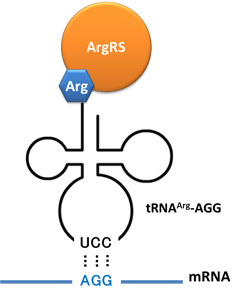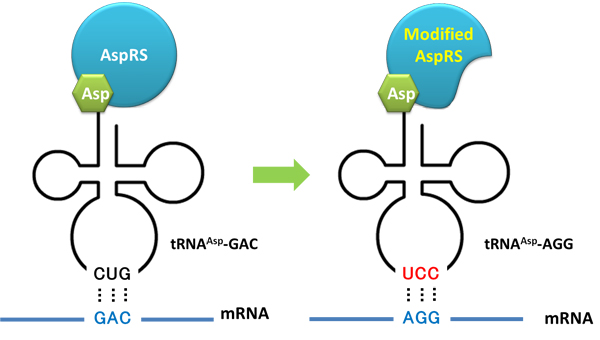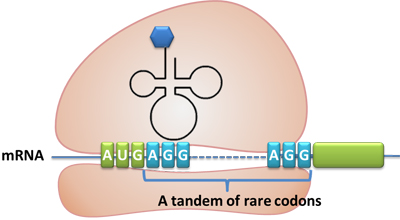Team:SJTU-BioX-Shanghai/Project/Subproject1/Design
From 2011.igem.org
|
|
DesignWe design a Rare-Codon Switch controlling protein biosynthesis. We can control the translation process by controlling how well the ribosome can get through a tandem of rare codons in the target protein's mRNA. This process can be achieved by controlling different combinations of Modulators and Reporters
tRNAaaRSNumber of Rare CodonsLocation of Rare CodonsModulator
Click here to see Modeling. ReporterReporter controls the number of rare codons in the target protein's mRNA. We chose the rarest codon AGG for Arg in E.coli as our controlling element. A tandem of AGG codons is inserted after the ATG codon of reporter gene. 1. Reporter for Qualitative Analysis: A tandem of 6 AGG codons is inserted after the ATG codon of reporter gene RFP and GFP respectively. The fluorescence emitted reflects how well the ribosome can get through a tandem of rare codons in the target protein's mRNA, thus reflecting how well our system works. 2. Reporter for Quantitative analysis: We use luciferase as our reporter gene for quantitative analysis. The amount of luciferase expressed is reflected by the light emitted when luciferase acts on the appropriate luciferin substrate. The light can be measured by luminometer and the quantity is positively correlated with the amount of luciferase and its activity (Learn more...). We use different combinations of number of AGG codons and strength of promoters to characterize regulation[1]. 1) bla promoter-luciferase (weaker promoter) A tandem of 2, 4, 6 or 8 AGG codons is inserted after the ATG codon of wild type luciferase 2) T7 promoter-luciferase (stronger promoter) A tandem of 2, 4, 6 or 8 AGG codons is inserted after the ATG codon of wild type luciferase Click here to see Modeling. Action: Combinations of Modulators and ReportersSelect a Modulator and a Reporter, then click
Reference[1]Ulrich Deuschlel., et al., Promoters of Escherichia coli: a hierarchy of in vivo strength indicates alternate structures The EMBO Journal vol.5 no. 11 pp.2987-2994, 1986 |
 "
"


